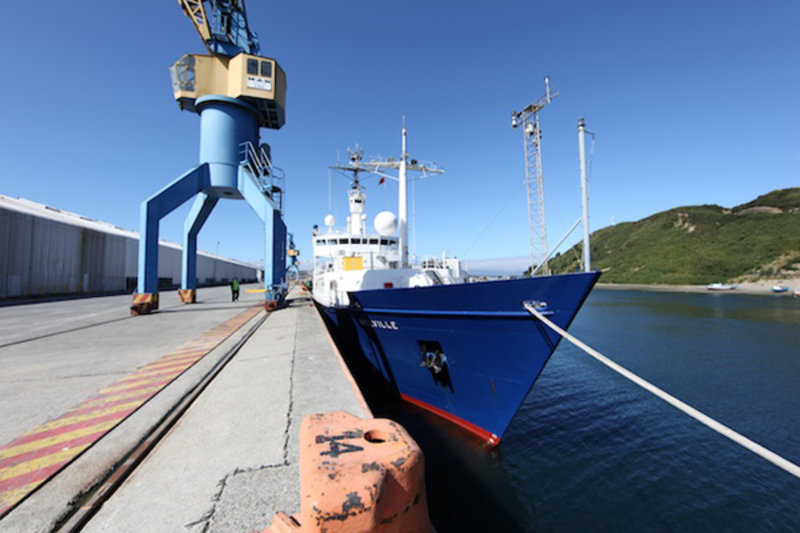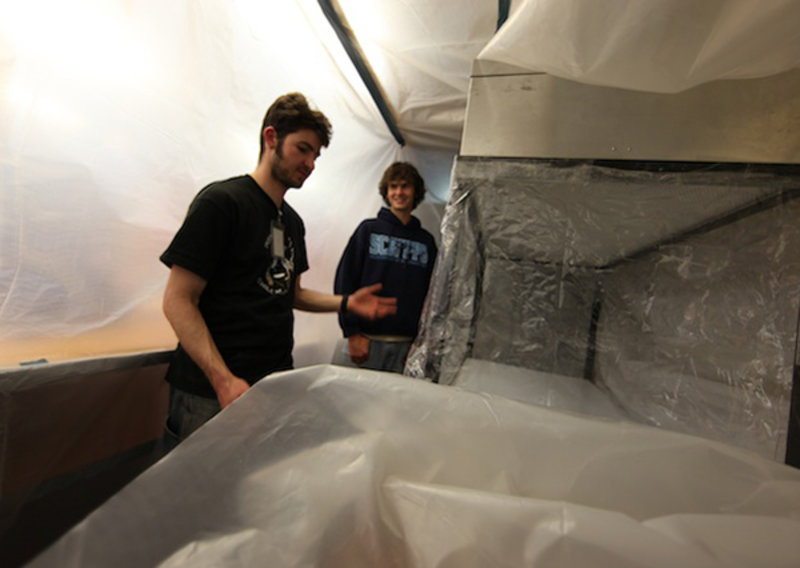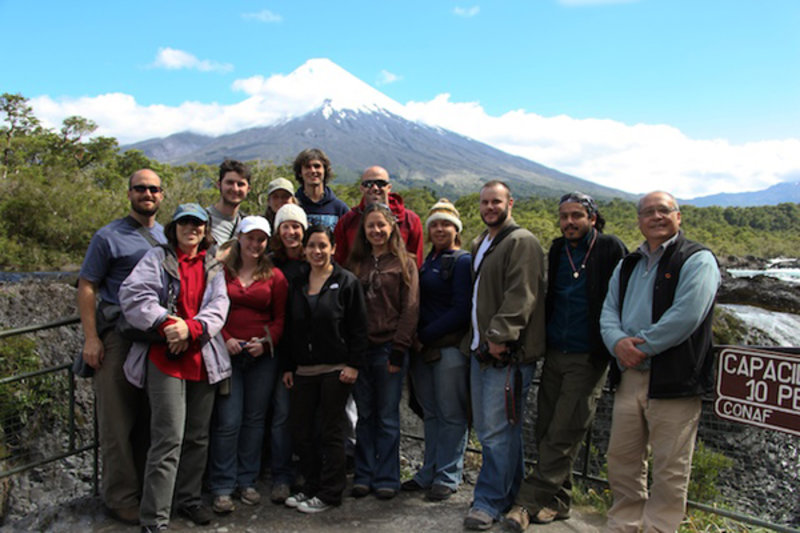
By Danny Richter, Scripps Institution of Oceanography
February 25, 2010
It is amazing to watch 38 scientists unpacking. We are embarking on a cruise that was first discussed in 2002. The proposal writing to fund it has been going on for three years, and I have personally been preparing my equipment and my procedures since September. All this preparation and investment of self and career is unleashed at once as we are finally allowed to open the boxes we packed and shipped off a month and a half ago.

The research vessel (R/V) Melville. Image courtesy of INSPIRE: Chile Margin 2010. Download image (jpg, 59 KB).
The result is instant focus and a flurry of activity. Thirty-eight scientists cram into the limited lab space aboard and try to remember what we packed, how we’re going to set it up, and to do it as quickly as we can. Since no one knows how big the seas will be when we leave, everything has to be secured (by bolt, screw, ratchet strap, or rope and eye-hook) before we head out.

Graduate students Danny Richter (left) and Ben Grupe in the "bubble." Image courtesy of INSPIRE: Chile Margin 2010. Download image (jpg, 65 KB).
Yet despite the pressures of limited time, space, and the level of investment in the success of this cruise, everyone is friendly. Communicating in both English and Spanish, we’ve been finding space for everyone and turning an empty lab into what we hope will be an endlessly busy workroom for the rest of the cruise.
Personally, I am waiting to set up "my bubble." I need to set up a plastic bubble that is fed by filtered air so that I can have a dust-free place to process my samples. I am doing trace-metal "clean work"; and dust is made of minerals that contain trace metals. If even a speck of dust contaminates one of my samples contaminates it, I can’t use it. This results in my feeling more-than-a-little pressure to set my space up well. I’ll be heading into Puerto Montt to get some 2-inch x 2-inch x 8-foot pieces of wood from which I can suspend the plastic that will be my bubble.

Sharing space in the lab. Graduate students Ashlee Henig (front) and Rosa Leon-Zayas (center) unpack, while Danny Richter builds the frame for the bubble. Image courtesy of INSPIRE: Chile Margin 2010. Download image (jpg, 91 KB).

Group photo at the Rio Petrohue at the foot of Volcan Osorno (left to right): Andrew Thurber, Lisa Levin, Danny Richter, Ashlee Henig, Christina Tanner, Alexis Pasulka, Ben Grupe, Stephanie Mendes, Ben Maurer, Monica Heintz, Rosa Leon, Sean Sylva, Mauricio Mella Barra, and Jorge Munoz. Image courtesy of INSPIRE: Chile Margin 2010. Download image (jpg, 59 KB).
This transition to instant focus and activity is all the more impressive when you consider what yesterday was like. With Jorge Munoz, from the Chilean Geological Survey, we had a great geology field trip in the lakes district northeast of Puerto Montt. Starting in Puerto Varas, we were able to get within a gondola ride of the top of Volcan Osorno, to see the churning rapids along the Rio Petrohue, and to hear about how Jorge has educated the residents of a village in the shadow of the volcano how to react in case of an eruption. The sights were gorgeous.
The trip was capped by “lunch,” which began at 4:30 p.m. and didn’t end until 6:30 or so. I was surprised to find myself hungry again by 9:30, when after an hour to collect ourselves, the 13 of us that went on the trip met up with the rest of the science crew and had a nice dinner before leaving. Wish us luck!